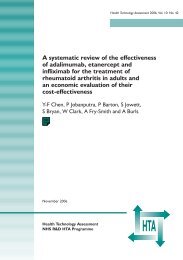Measuring Athlete Imagery Ability: The Sport ... - ResearchGate
Measuring Athlete Imagery Ability: The Sport ... - ResearchGate
Measuring Athlete Imagery Ability: The Sport ... - ResearchGate
Create successful ePaper yourself
Turn your PDF publications into a flip-book with our unique Google optimized e-Paper software.
432 Williams and Cumming<br />
demonstrating that athletes competing at a higher level can display greater imagery<br />
ability (e.g., Roberts et al., 2008).<br />
SIAQ <strong>Imagery</strong> Content<br />
A repeated-measures ANOVA investigated any differences in ease of imaging<br />
across SIAQ subscales. Mauchly’s test of sphericity was examined to investigate<br />
the equality of the within-subject factor (SIAQ subscales). <strong>The</strong> data violated this<br />
assumption (p < .05), so the Greenhouse–Geisser correction was reported. Results<br />
revealed significant differences in ease of imaging between the imagery content<br />
measured by the SIAQ, F(3.66, 1556.43) = 124.31, p < .001, η 2 = .23, observed<br />
power = 100%. Post hoc analysis revealed that participants found it significantly<br />
easier to image affect images (M = 5.92, SD = .83) compared with skill images<br />
(M = 5.16, SD = .96), which were significantly easier to image than strategy (M =<br />
4.83, SD = 1.18), goal (M = 4.83, SD = 1.30), and mastery (M = 4.90, SD = 1.05)<br />
images. Similarly to athletes using functions of imagery to varying extents (e.g.,<br />
Cumming & Hall, 2002; Hall et al., 1998), athletes also diverge in their ability to<br />
image different content. This finding reinforces the need to capture an athlete’s<br />
range of sport imagery ability.<br />
Study 4<br />
Despite Studies 1, 2, and 3 validating the factor structure of the SIAQ, it is yet to<br />
be compared with other imagery ability questionnaires to establish its concurrent<br />
validity. Investigating the correlations between the SIAQ and another measure<br />
would establish how SIAQ subscales relate to imagery ability assessed by other<br />
measures. <strong>The</strong> purpose of Study 4 was to therefore examine the concurrent validity<br />
of the SIAQ by investigating relationships between the SIAQ ease of imaging sport<br />
images and ease of imaging movement images measured by the most recent version<br />
of the Movement <strong>Imagery</strong> Questionnaire, the Movement <strong>Imagery</strong> Questionnaire-3<br />
(MIQ-3; Williams, Cumming, & Edwards, in press). A secondary purpose of Study<br />
4 was to examine the five-factor model fit of the SIAQ on a second population of<br />
athletes. A priori hypothesized relationships were thought to exist between the<br />
SIAQ and MIQ-3 due to both questionnaires measuring ease of imaging. However,<br />
it was thought these would be moderate in size due to the SIAQ assessing imagery<br />
ability of a different content to that assessed by the MIQ-3.<br />
Participants<br />
For participant details, see Table 1.<br />
Measures<br />
Method<br />
Demographic Information. <strong>The</strong> measures were identical to those of the pilot<br />
study and Studies 1, 2, and 3.
















